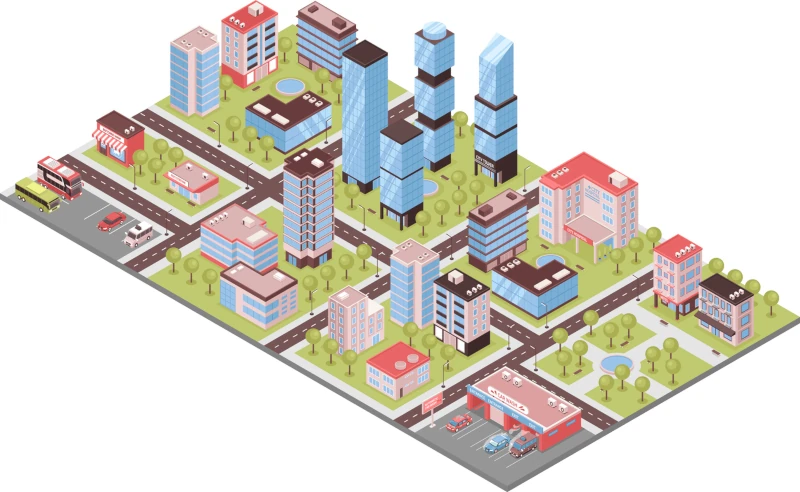A Look at Commercial Space Changes through the Eyes of an Architect
Every three years in California, the California Building Standards Code undergoes a comprehensive update. This cycle reflects the state’s commitment to enhancing safety, sustainability and innovation in construction. The latest code changes, most of which were announced in 2022, were implemented recently, one last month. This brings significant implications for architects working in commercial spaces. Understanding these updates, for themselves and their clients, can prove crucial for ensuring compliance, optimizing design and delivering projects that meet both regulatory standards and client expectations.
1. Enhanced Energy Efficiency Standards
It probably won’t surprise you to discover that one of the most notable updates in the code is the continued push for energy efficiency. This aligns with California’s broader goals of reducing carbon emissions and moving toward a more sustainable future. The new standards raise the bar for energy performance in commercial buildings, requiring advanced HVAC systems, more rigorous insulation and high-performance glazing.
For architects, this means integrating these elements into the design process from the outset. Early collaboration with mechanical engineers and energy consultants becomes even more essential to ensure that the building envelope, systems and materials contribute to the overall energy goals. This also opens opportunities for innovative design solutions, such as the incorporation of passive solar design, natural ventilation strategies, better insulation and the use of renewable energy sources like solar panels. A building system called structural insulated panels (SIPs), has been around for decades but is getting a closer look as an efficient system option. SIPs can be produced in custom sizes and are factory manufactured.
2. Stricter Seismic Resilience Requirements
Frequent low-level seismic activity in the Bay Area means thoughts of the big one are never out of mind. Because earthquakes remain a significant concern, the building code updates reflect this with stricter seismic resilience requirements for commercial buildings. The changes focus on improving the performance of structural systems to better withstand earthquakes, including updated criteria for shear walls, foundations and connection details.
For architects, this means working closely with structural engineers to ensure that a building’s design meets the code while taking into account the latest research and best practices in seismic design. The challenge is for the architectural design to balance the practical need for enhanced structural integrity and the structure’s aesthetics. Naturally, there is the potential for decisions to be influenced by building materials, the structural form and footprint, depending on the geographic setting and client needs.
3.Accessibility Updates
The 2024 code changes also include updates to accessibility standards, reinforcing California’s leadership in creating inclusive spaces. These changes address the design of entryways, restrooms and common areas, with particular emphasis on improving accessibility for individuals with disabilities.
Architects must now pay closer attention to the nuances of accessible design, ensuring that all public and common-use areas are not only compliant but also user-friendly. This might involve rethinking circulation paths, adjusting floor plans or incorporating new technologies like automatic door openers and voice-activated controls. The goal is to create spaces that are welcoming and functional for all users, regardless of their physical abilities.
4. Fire Safety and Wildfire Resilience
With wildfires an increasing threat, the 2024 building code introduces new requirements aimed at improving fire safety and wildfire resilience. This is true especially in commercial buildings located in fire-prone areas. The code now mandates the use of fire-resistant materials, enhanced fire suppression systems and more stringent distance requirements for separating buildings.
High-risk areas present special challenges to architects who must integrate these considerations into their designs. The selection of materials, landscape design and building orientation all play a role in mitigating wildfire risks. Additionally, architects may need to collaborate with fire safety experts to ensure that the design not only meets the code but also provides the highest level of safety possible.
5. Sustainability and Green Building Initiatives
Sustainability remains at the forefront of California’s building codes, and the 2024 updates include several provisions aimed at promoting green building practices. This includes requirements for water conservation, waste reduction and yes, the use of sustainable materials.
Architects are encouraged to adopt a holistic approach to sustainability, integrating these elements into every phase of the design and construction process. This might involve specifying recycled materials, designing for water reuse or creating flexible spaces that can adapt to future needs.
As with any building code changes, these changes for Californians may add new expenses to the bottom line while planning a project. Architects working in commercial spaces who can convey both the challenges and the opportunities these changes present for their clients will benefit from transparent communication. By staying informed and proactive, architects can not only ensure compliance but also drive innovation and sustainability in their projects. Embracing these updates as part of the design process will lead to buildings that are safer, more efficient and better suited to the needs of a rapidly changing world.


